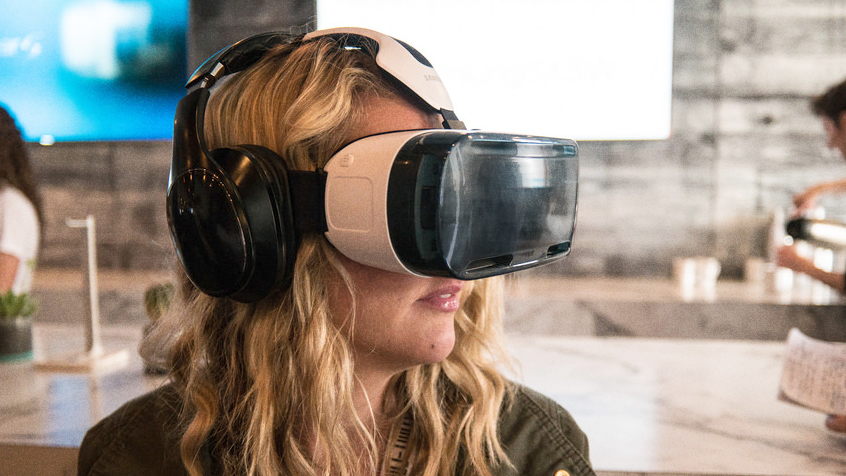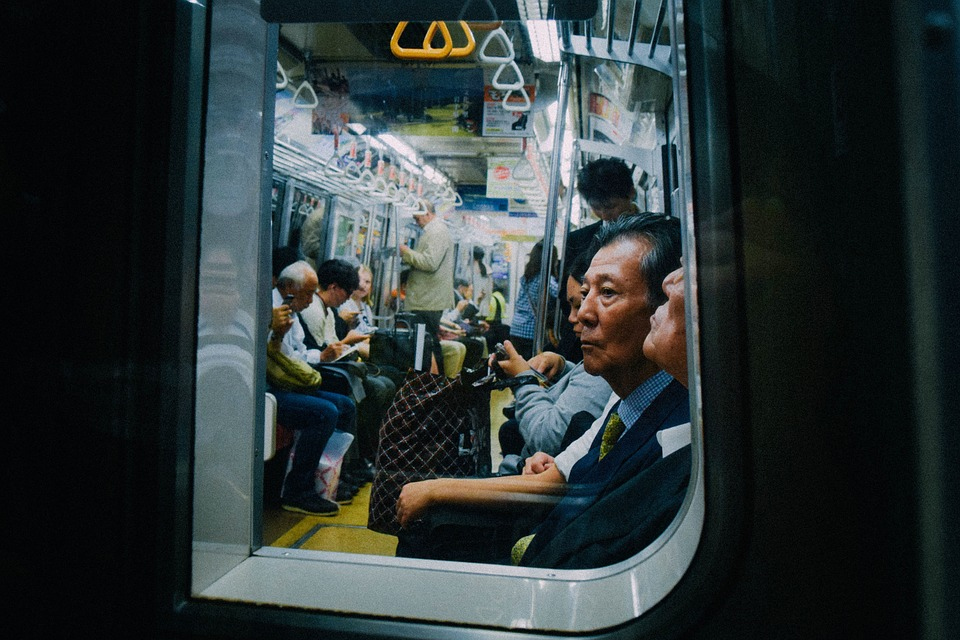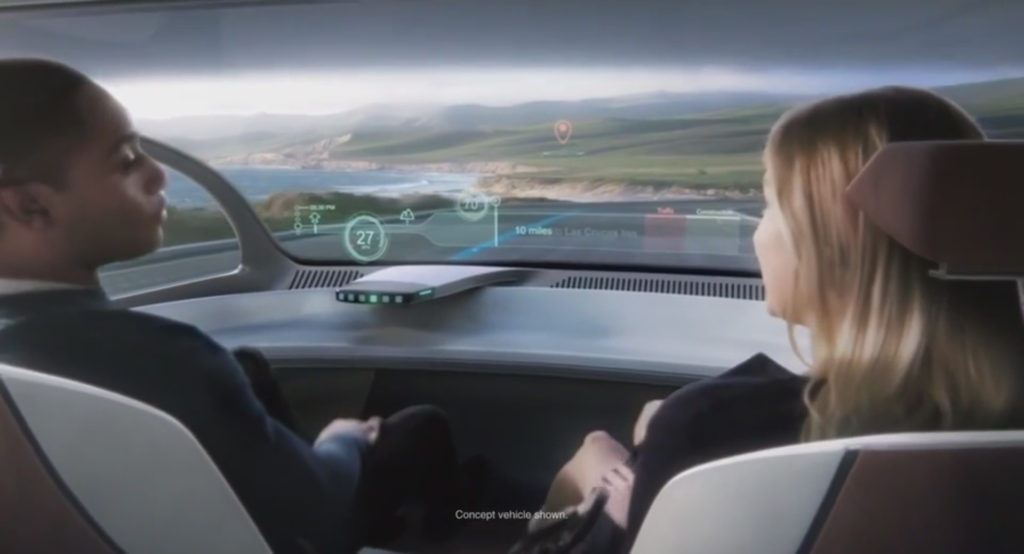
 By Jerry Buckley, Director of Marketing, EMC Outdoor
By Jerry Buckley, Director of Marketing, EMC Outdoor
The first time I placed Virtual Reality (VR) goggles on my head, I was not too impressed with the immersion experience that I was having. The goggles were bulky, I was tripping over the tether cord, and I was accidentally hitting people as I doodled a squiggle masterpiece with Google Tilt Brush. In short, I could not untether from the real world — as the technology promised.
BUT I was absolutely blown away by the technology’s possibilities. Absolutely. Blown. Away. I immediately thought of how powerful this experience would be if the goggles grew to the size of a small room that I could walk into, freeing my body of the wearable tech, and giving me a true, full-surround experience with visual, spatial audio, and maybe even scent.
As an OOH advocate, I quickly considered the implications for the spaces my industry relies on when VR finally merges with personal transit channels like self-driving vehicles, and allows us to step into any environment we choose — including ignoring the “true” outside world on the way to our destinations. How would OOH interact with these types of deep digital experiences? What would we have to offer, and will we remain relevant?
At the recent Lookout2017 national convention, Chan Lieu of Venable LLC predicted that our future society fully utilizing self-driving vehicles is far off, with 75% of cars being autonomous by 2040 and 95% of cars self-driven by 2070. Anyone with 30 or so years under their belt knows how quickly 2040 will arrive, and now is the time for us to consider the future with this new disruptive technology.
Rolling Out Digital Immersion:
Until that future time of full digital immersion, pieces of a fully-realized future will appear as we slowly turn what were our “driver’s seats” to face the other passengers, and windshields become part digital screen as they did in a recent Ford commercial.
With partial digital immersion experiences, or augmented reality (AR), one sees digitally-placed assets in addition to the real world. In the future, the car interior will become a digital space that interacts with real-world assets like billboards, wallscapes, buses and street displays in real time, completely merging digital, OOH, and brands’ messaging opportunities. This could be the ultimate in contextual messaging, with physical space, consumer profile, a real-time digital messaging channel, and creativity merging. The current models of AR / VR + media asset + Geofencing + mobile attribution + demographic profile are all being introduced now, but the “big OOH merge” like this scenario is off in the distance.
Partial immersion transportation scenarios like this, that combine the digital and real world, could also allow people to see proposed future planning for city sites that they pass, or learn the history of areas they tour via incredible interactive detail. The possibilities are truly limitless, and could all be sponsored by brands as advertising evolves into more digitally-sponsored experiences that provide immense value to people’s lives in our common spaces.
Now jump all the way into the digital pool:
Complete digital immersion is where the real fun kicks in. Imagine your vehicle as your own customizable digital thrill ride and mini-IMAX theater that is 1/2 transportation mode and 1/2 experience chamber. Might sound crazy, but once you trust the technology to get you there safely, what is stopping that evolution from happening? Today, you use a car to get to places in a very utilitarian way, the destination is the goal: work, home, the grocery store, punctuated by sitting at traffic lights. But once the future-you closes that door and sits inside a self-driving car, you will still end up at the grocery store, but the route you see could be through the sun and around the planets. When the day comes that you completely trust your vehicle to drive you anywhere safely, the interior is open to becoming a digital playground — completely ignoring the “real” trip outside.
This is the scenario where billboards get really worried.
This is the reckoning day for out of home, and especially future roadside “billboards.” How will our industry engage a transporting audience that can completely ignore and block us if they want? Today, the see-through windshield saves us: people must see where they are going. In the future, the windshield’s allegiance will be elsewhere, most likely to a billion digital scenarios that can play like your Netflix. For people to embrace the view outside the windshield, the most interesting scenarios will be those where one can’t tell where the OOH ends and the digital begins. Full integration. We can do it if we remain interesting and relevant — and embrace change.
Of course, billboards are only part of the OOH landscape. How might other parts of OOH be affected?

Beyond Cars:
Out of home is already providing static experiential immersion spaces like fully-wrapped interior subway cars and transit passageways wrapped floor-to-ceiling. Imagine the future possibilities when these spaces are fully-digitized enclosures. The creative possibilities extend well beyond autonomous cars to immersive digital public spaces limited only by the imagination, and what budgets and improving technology provide as a timeline.
Can you imagine a future where these public spaces are fully-digitized VR experiences? Future thinking OOH and experiential specialists go there naturally as we continually search for new ideas, spaces and experiences for clients. In these early days, we should think beyond technological limits and budgets, and let our imaginations leap!

The future is definitely coming, and guess what? It’s already here via Experiential:
At EMC, we routinely present immersive VR enclosures to clients. These types of pitches ask a client to envision a full-surround space beyond any that they currently have — like their own branded Universal Studios digital ride that can transform any person’s day who enters the space. It’s a lot to consider, even for savvy digital teams. But the possibilities are some of the most exciting marketing and messaging scenarios being considered today. Limited only by budget, amazing digital encloses are built. Think of how they too will evolve, peppering the everyday landscape far outside of Disney’s and Universal’s ticketed gates. These will be a major part of experiential brand experiences much sooner than later. Are you considering them?
Do People Want This?
For those wary of the general public’s appetite for altering their realities, consider the Pokémon Go phenomenon of 2016, or the current plethora of Snapchat filters posting every minute. There is opportunity in this wave of adoption, and Out of Home is poised as a natural facilitator to accentuate and reinterpret people’s environments in intriguing ways. Embracing experiential and OOH interaction over static on as many levels as possible will help pave the way to a digital playground that we as consumers, agencies and brands can only imagine today.
Walk out your door, and imagine for yourself what type of spaces your VR goggles could evolve into. An amazing future is coming, and it is ours to create.
Are you thinking about digital experiences? I’d love to hear your thoughts. Please reach out to me at jerry@emcoutdoor.com or on LinkedIn.
Paid Advertisement


















